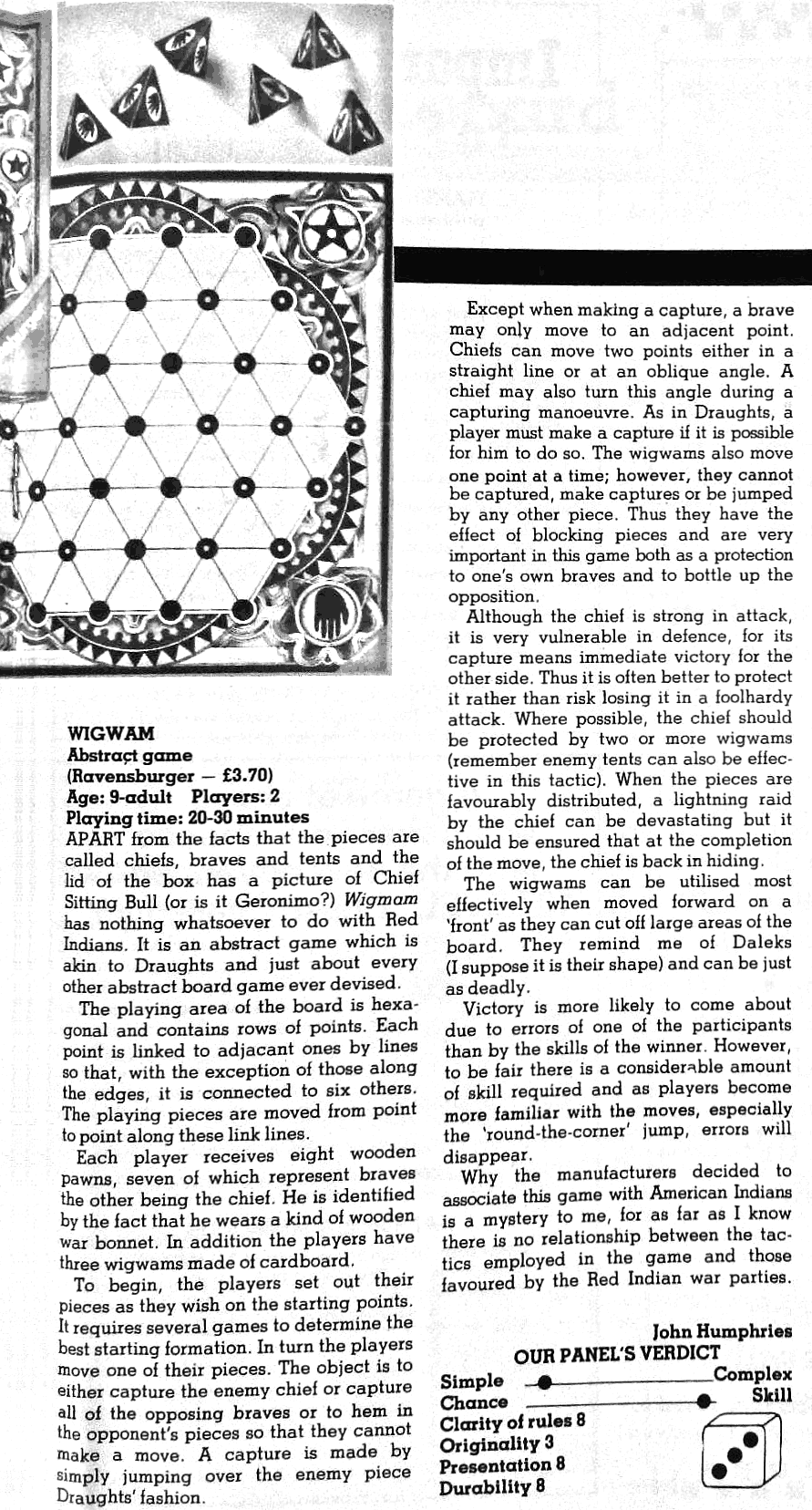WIGWAM
Copyright (c) 1977 Otto Maier Verlag
Ravensburg
This game is played on the
following board:
The marked cells represent the player's
initial bases. Each player have off board, 1
King, 7 soldiers and 3 walls.
- DROP PHASE
- On each turn, each player drops a friendly piece still off board on an
empty cell insides his base. When all pieces are dropped, move to move
phase.
- MOVE PHASE - On each turn, each
player moves one friendly piece:
- Walls move to an adjacent empty cell.
Walls cannot captured or be captured.
- Soldiers move to an adjacent empty cell.
- Soldiers may also capture an adjacent
enemy piece (except walls) by jumping over it and landing on the
immediate next cell (which must be empty).
- Captures are mandatory and multiple (but
the player may choose what capture sequence he prefers).
However, between pairs of jumps, there must be more than 90º
(i.e., no obtuse angles).
- Kings may move up to cells (also with no
obtuse angles), and may jump over (without capture) friendly
pieces.
- Kings also capture like soldiers.
- GOAL
- Wins the player that achieves one of the following goals: (a)
Capture the enemy King, (b) Stalemate the adversary, or (c)
Capture all enemy soldiers.
- If one turn is executed without soldiers on
board, the game is a draw.
|
|
|
An
initial example
After the drops, Black moved one of his
soldiers.
In these diagrams, walls are stacks of size 1,
soldiers of size 2 and Kings of size 3.
|
|
|
A capture
example
The black King may jump east and capture
a white soldier. Then, it may jump again over the soldier at southeast.
However he cannot capture the third white soldier (at its left) because
that would be a 60º angle jump (an obtuse angle).
That would mean that after the single or double
black capture (it is mandatory to capture), White could win the game by
capturing the black king.
|
Here's a review from Games & Puzzles
#71:

![]()